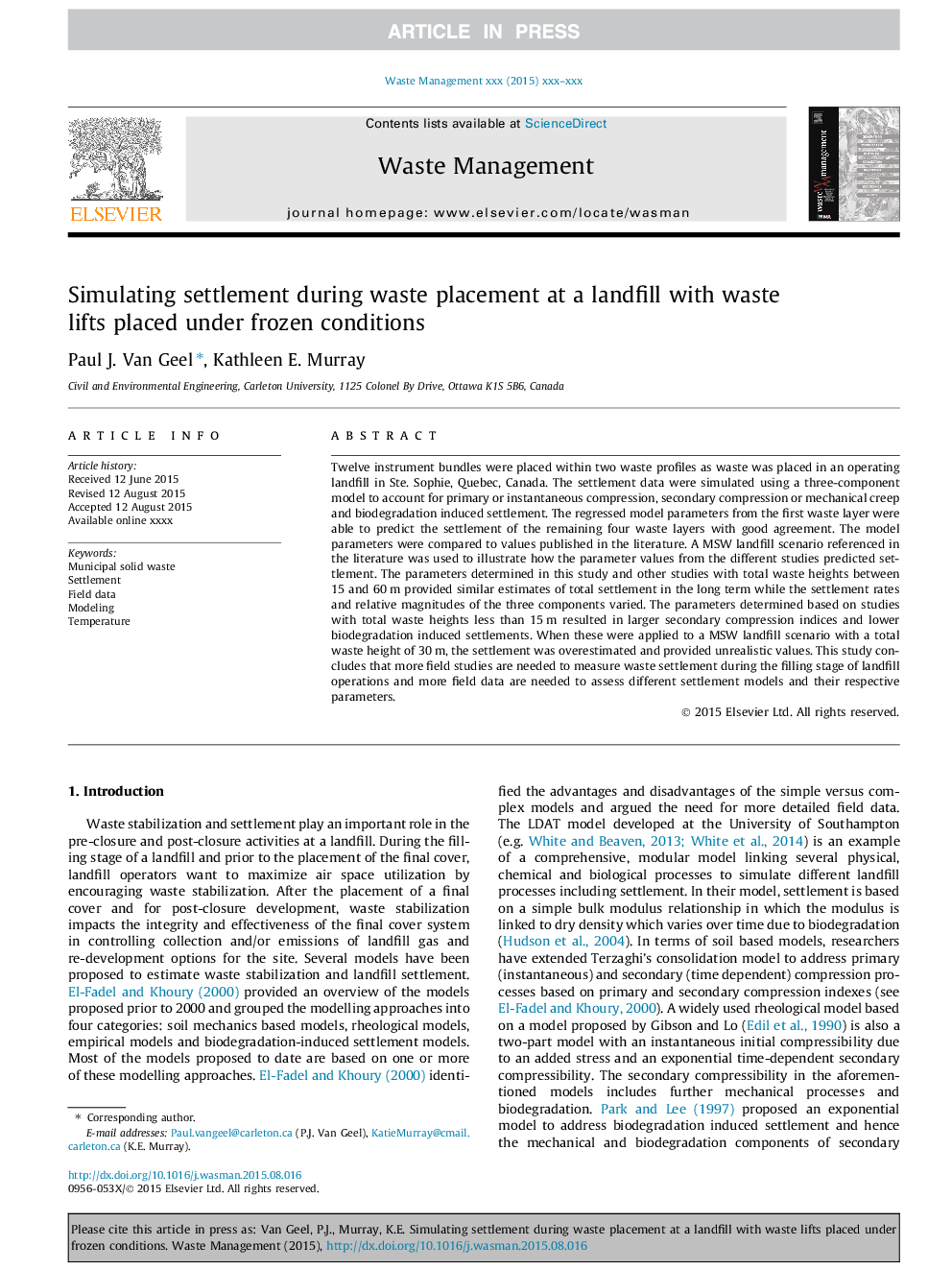| Article ID | Journal | Published Year | Pages | File Type |
|---|---|---|---|---|
| 6354491 | Waste Management | 2015 | 10 Pages |
Abstract
Twelve instrument bundles were placed within two waste profiles as waste was placed in an operating landfill in Ste. Sophie, Quebec, Canada. The settlement data were simulated using a three-component model to account for primary or instantaneous compression, secondary compression or mechanical creep and biodegradation induced settlement. The regressed model parameters from the first waste layer were able to predict the settlement of the remaining four waste layers with good agreement. The model parameters were compared to values published in the literature. A MSW landfill scenario referenced in the literature was used to illustrate how the parameter values from the different studies predicted settlement. The parameters determined in this study and other studies with total waste heights between 15 and 60Â m provided similar estimates of total settlement in the long term while the settlement rates and relative magnitudes of the three components varied. The parameters determined based on studies with total waste heights less than 15Â m resulted in larger secondary compression indices and lower biodegradation induced settlements. When these were applied to a MSW landfill scenario with a total waste height of 30Â m, the settlement was overestimated and provided unrealistic values. This study concludes that more field studies are needed to measure waste settlement during the filling stage of landfill operations and more field data are needed to assess different settlement models and their respective parameters.
Related Topics
Physical Sciences and Engineering
Earth and Planetary Sciences
Geotechnical Engineering and Engineering Geology
Authors
Paul J. Van Geel, Kathleen E. Murray,
